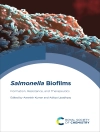Community-acquired pneumonia (CAP) is a disease associated with high morbidity and mortality, with at least one third of cases requiring hospitalization, exceeding the numbers admitted for myocardial infarction and stroke. Despite a broad armamentarium of antimicrobials available, it remains an important cause of death in industrialized countries. CAP is caused by a variety of pathogens with their order of importance dependent on the location and population studied. Despite the importance of CAP, reliable data and a recommended evidence-based therapy are lacking, and basic research must be improved.
The goal of this volume is to present state-of-the-art knowledge on epidemiology, clinical presentation, immunology, pathology, and diagnosis including the identification of ‘new pathogens’. Therapeutic approaches, antibiotics resistance, disease management and vaccination strategies are also covered. The volume is of interest to researchers and clinicians in virology, epidemiology and biomedicine.
Inhoudsopgave
Diagnosis and treatment of community acquired pneumonia – the German perspective.- Detection of respiratory bacterial pathogens.- Viral pathogens and epidemiology, detection, therapy and resistance.- Resistance in Streptococcus pneumoniae.- Influenza.- Pathogenesis of Chlamydophila pneumoniae infections — epidemiology, immunity, cell biology, virulence factors.- Legionnaires’ disease and its agent Legionella pneumophila.- Pathogenesis of Streptococcus pneumoniae infections:adaptive immunity, innate immunity, cell biology, virulence factors.- Pathogenesis of Mycoplasma pneumoniae infections:adaptive immunity, innate immunity, cell biology, and virulence factors.- Community-acquired pneumonia: paving the way towards new vaccination concepts.












